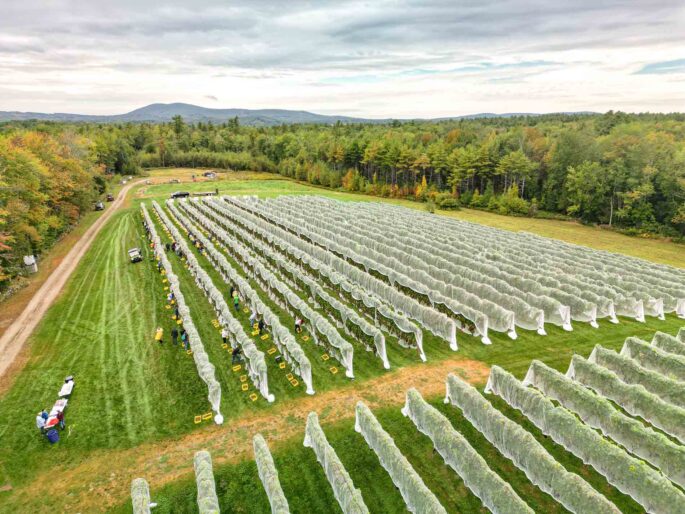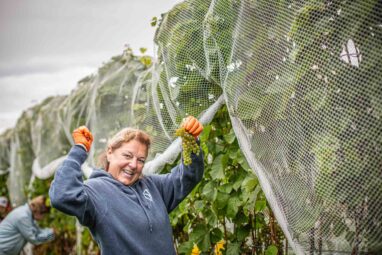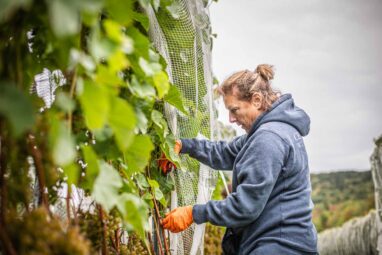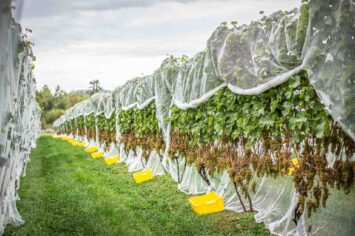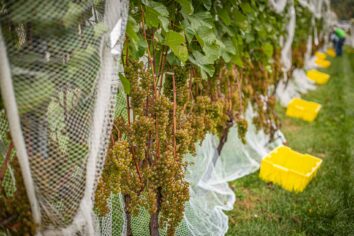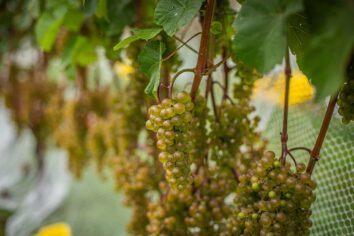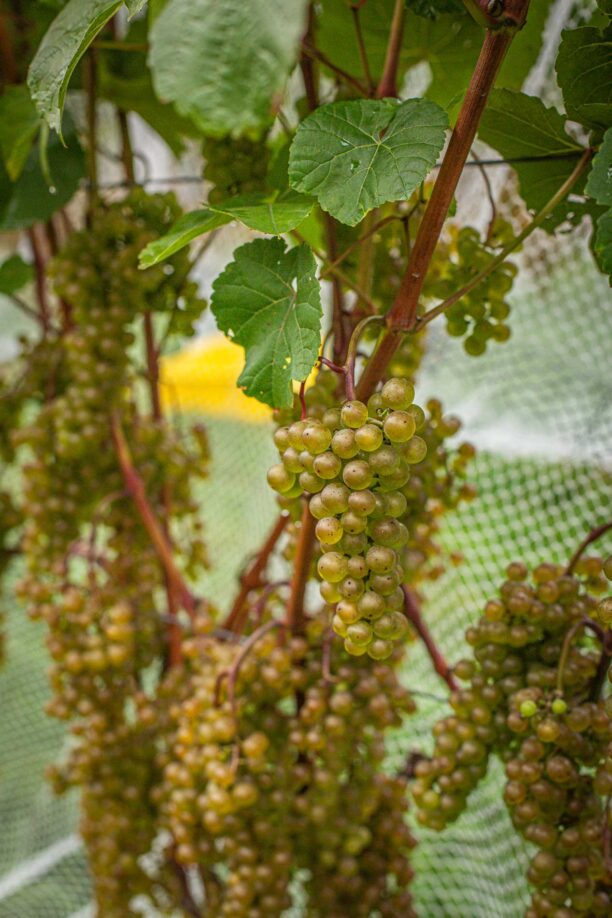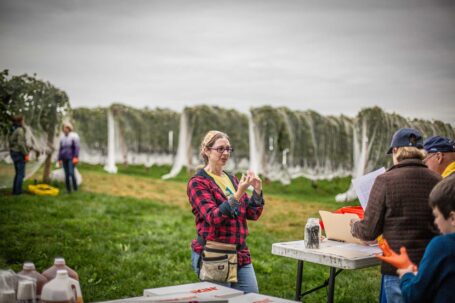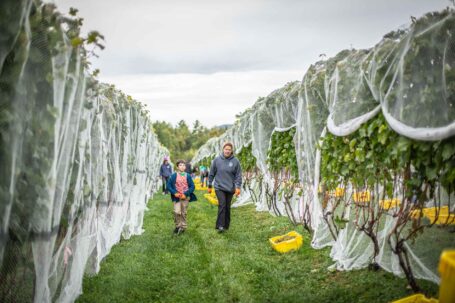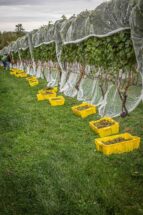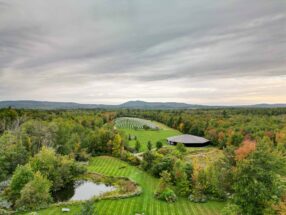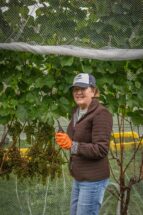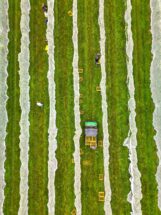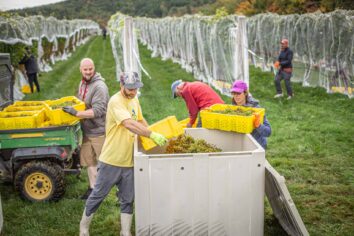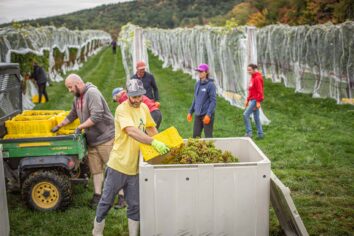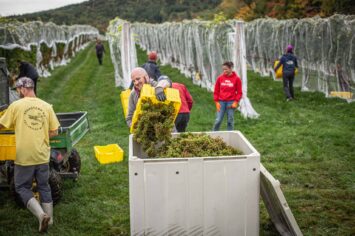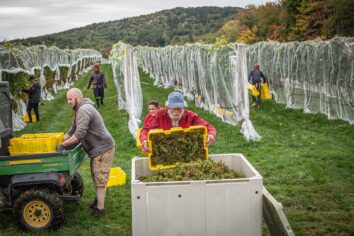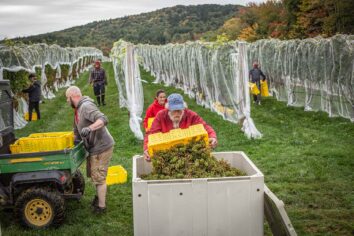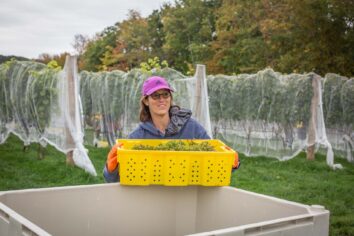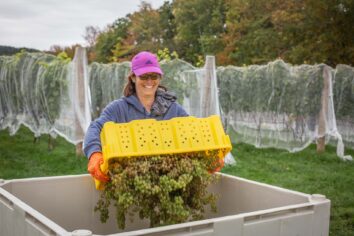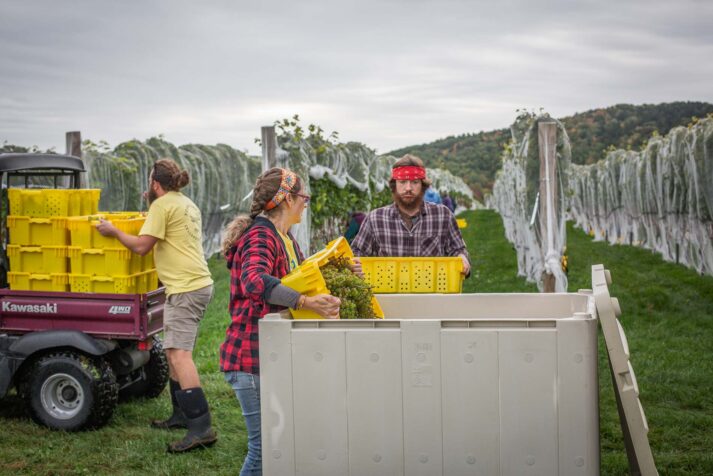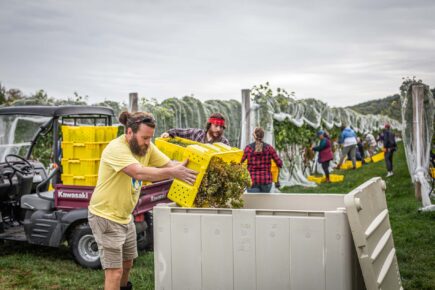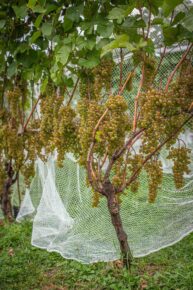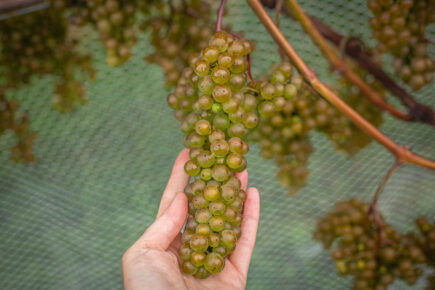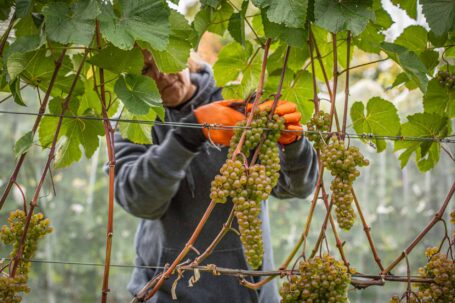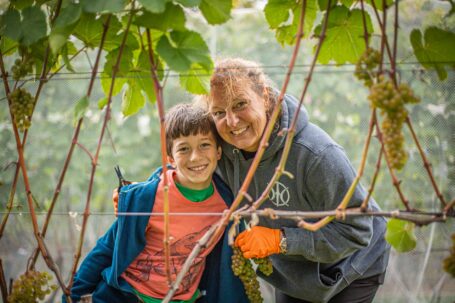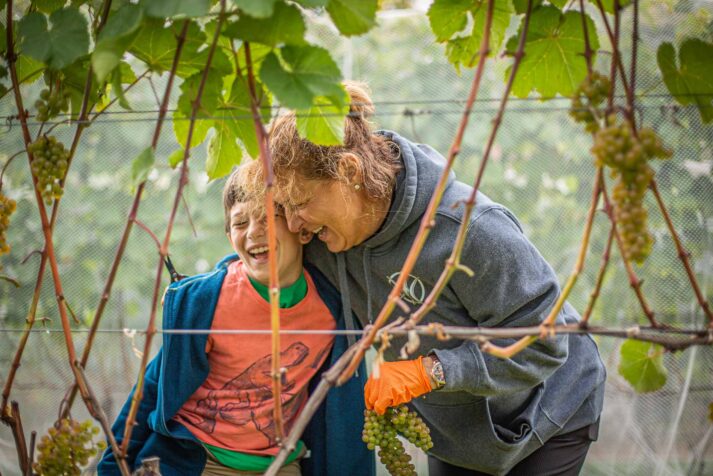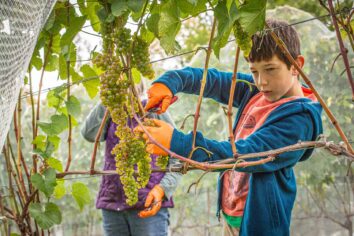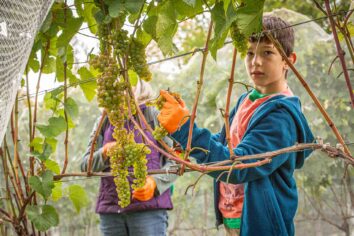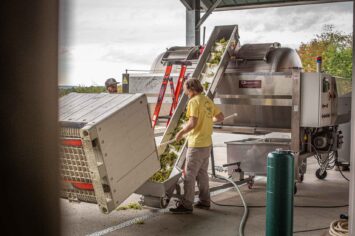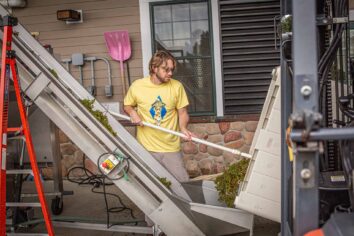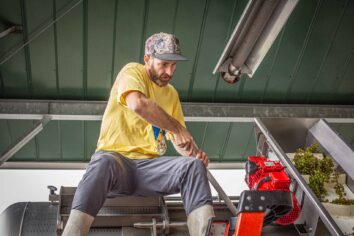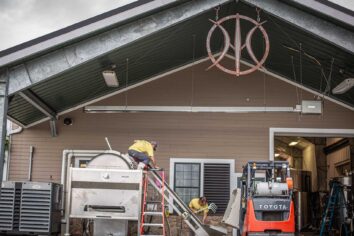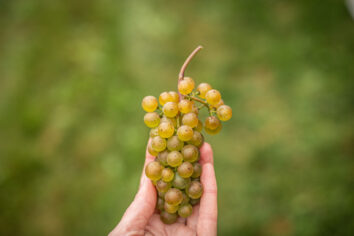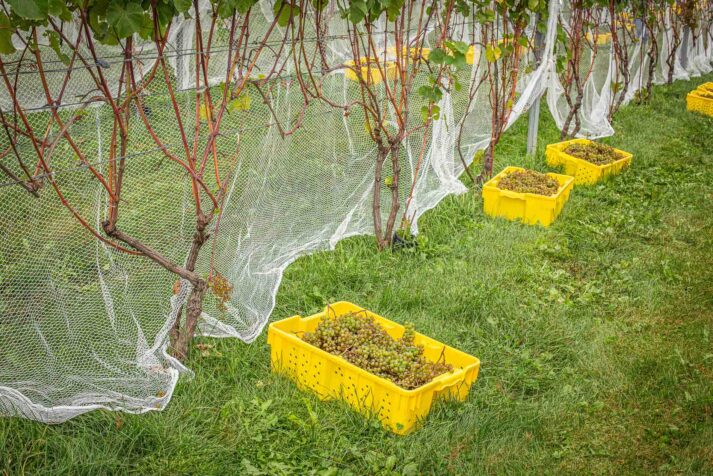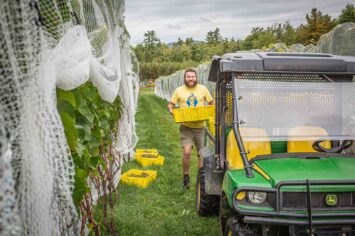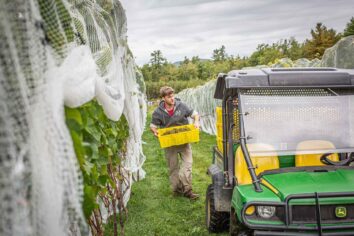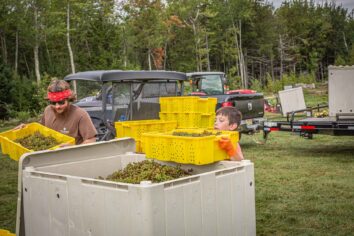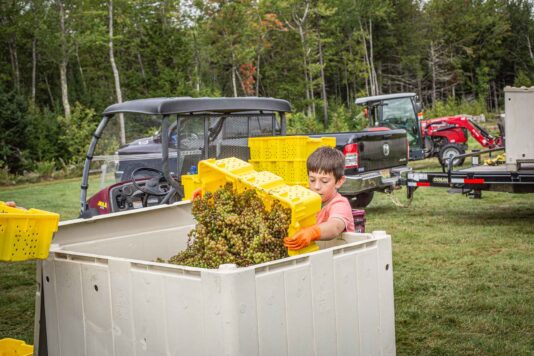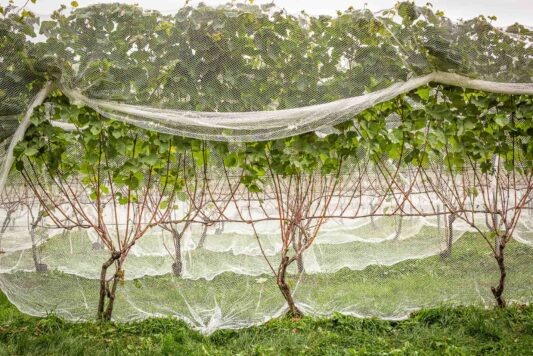Over 50 volunteers joined us bright and early this past Saturday at our Lincolnville vineyard for the season’s first record breaking 2024 L’Acadie Blanc Harvest. Thanks to their hard work, we picked a jaw-dropping 12 tons of L’Acadie Blanc grapes—breaking our previous record by a wide margin. Just for reference, that’s more fruit than the entire vineyard produced last year, and we’re only a third of the way through!
Our winery team pressed the grapes late into the night, preparing everything for the next batch of sparkling wines.

A cluster of grapes from Cellardoor Winery’s recording breaking 2024 L’Acadie Blanc harvest. L’Acadie Blanc grapes are small to medium in size, with tight, compact clusters that hang neatly on the vine. The berries themselves are a pale greenish-yellow hue, often with a subtle golden tinge as they ripen under the late summer sun. The skin is thin and smooth, giving them a translucent glow, especially when the sunlight hits them just right. In the vineyard, these clusters can appear almost luminous against the deep green leaves of the vine. As the grapes mature, the color shift is slight but noticeable, signaling when they’re ready for harvest—perfect for sparkling wine production, where a lower Brix level is key.
L’Acadie Blanc: A Grape That Thrives in the North
L’Acadie Blanc may not be a household name, but it’s become the backbone of Nova Scotia’s wine scene. Initially developed in Ontario, it’s ideally suited for cooler climates like ours. When we began replanting our vineyard in 2008, we sought varieties that could handle Maine’s cold winters while still producing great wine. L’Acadie Blanc checked all the boxes.
We first planted L’Acadie Blanc in 2013 after replacing some vines that weren’t thriving. Since then, it’s become one of our most reliable producers. We added another 700 vines of L’Acadie in 2017 to meet growing demand. Known for its ability to yield big crops, it’s perfect for our sparkling wine program, where lower Brix is ideal.
Why This Year’s Harvest Was Record Breaking
Several factors came together to make this year’s harvest our biggest yet: The mild winter and spring with no deep freeze or spring frost to kill buds. Couple that with a hot summer; we had an earlier bud break and earlier ripening. This led us to make an unusual decision—we didn’t cluster thin before veraison. In years past, we’ve had to cut off up to half the clusters to ensure the fruit ripened before frost. But with the weather on our side, we let the vines keep their full load, and it paid off.
We also trialed a German Halbbogen training system on half the vineyard. Instead of laying the canes flat, we arched them, which helped get sap to the middle buds and ensured all the buds pushed. With more buds and more shoots, we got more clusters. The results were so strong, we’ll be converting the rest of the vineyard to this system next year.
A large, healthy canopy also played a crucial role. Each shoot needs 14 to 16 well-exposed leaves to ripen a cluster, and with L’Acadie producing around 60 clusters per vine, the canopy made all the difference.
Why L’Acadie Blanc Shines for Sparkling Wine
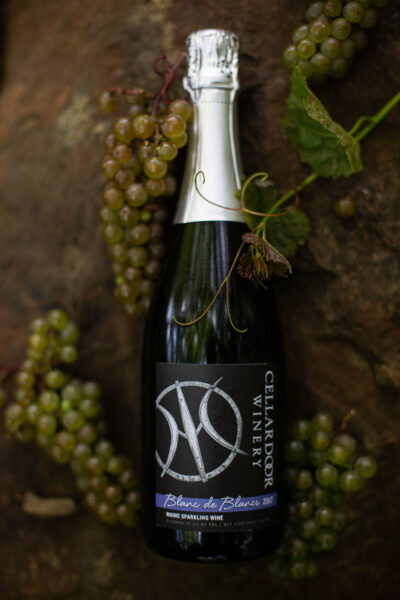
Blanc de Blancs: This Brut Nature style sparkling wine is delicate on the palate with a hint stone fruit.
L’Acadie Blanc is known for its high yields—often 5 to 6 tons per acre. This year, we went beyond that with 8 tons per acre. A harvest like this wouldn’t be possible with Marquette, which only produces two clusters per shoot and needs more time to ripen. Marquette needs higher Brix for still wine, so we can’t afford to let the vines carry too much fruit.
L’Acadie Blanc, on the other hand, ripens at a lower Brix, making it perfect for sparkling wines. That’s why we can leave more fruit on the vine without compromising the quality of the wine. You can taste L’Acadie blanc in our traditional method Blanc de Blancs.
Join Us for the Marquette Harvest on October 5th
If you missed the excitement of this harvest, don’t worry—there’s more to come! We are harvesting Marquette, Frontenac gris, and Frontenac blanc on October 5th at 7:30 am, and we’d love to have you join us. It’s a great way to get involved and experience the magic of harvest season firsthand.
Sign up for email reminders and more information below:
Join our Volunteer Harvest Team!
Sign up to receive updates about upcoming harvest volunteer opportunities.

